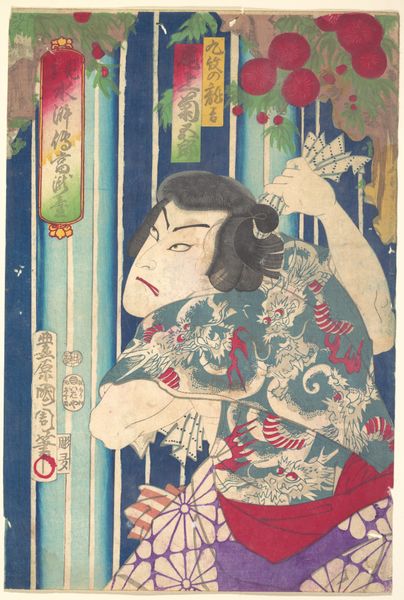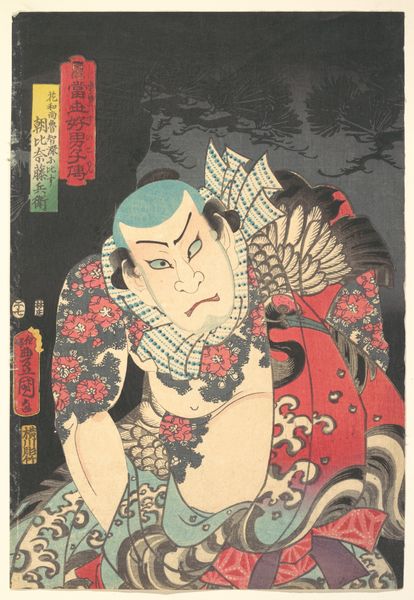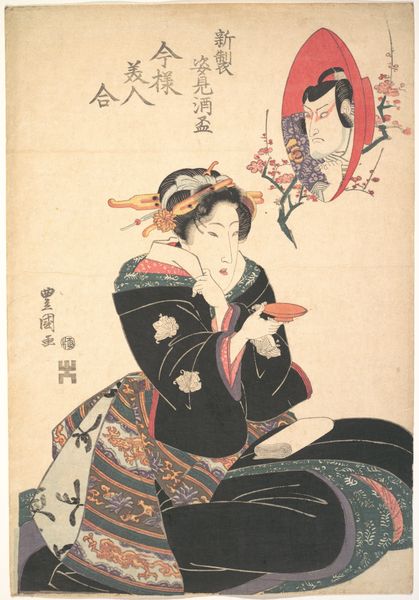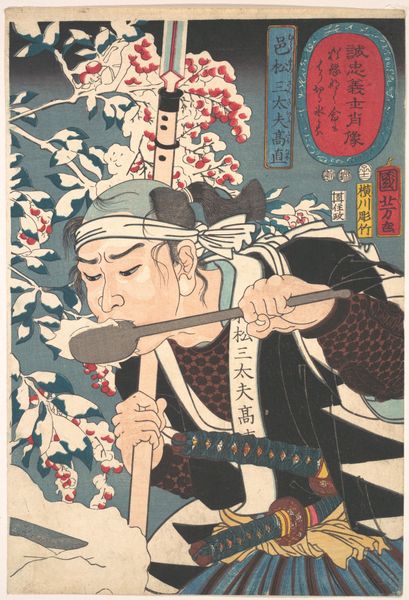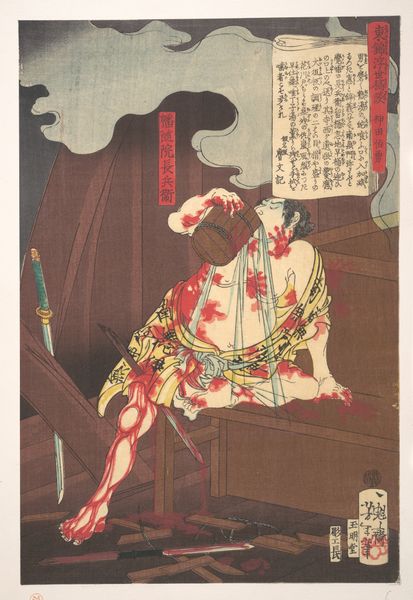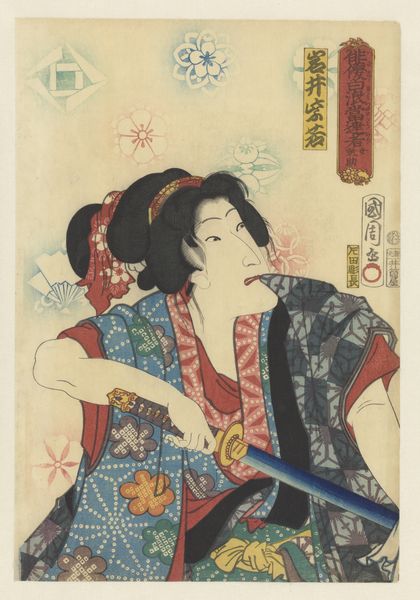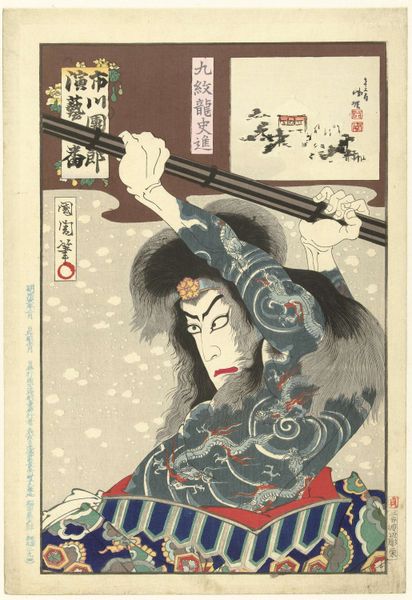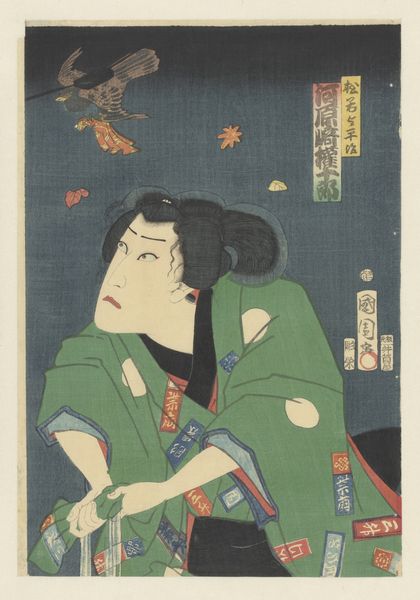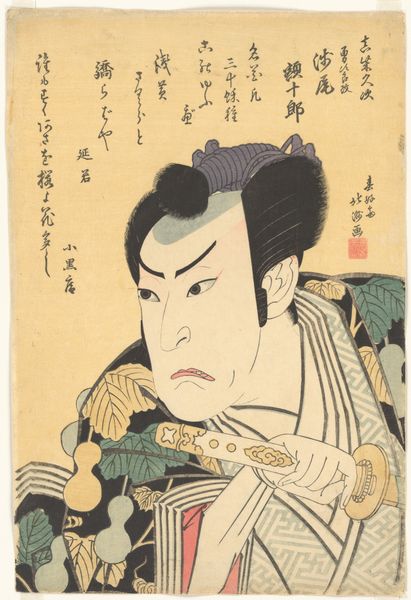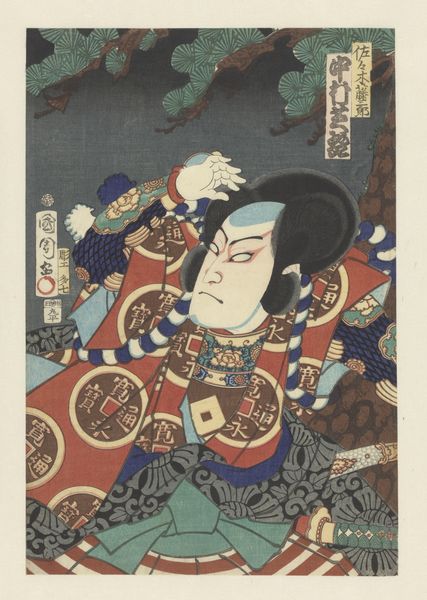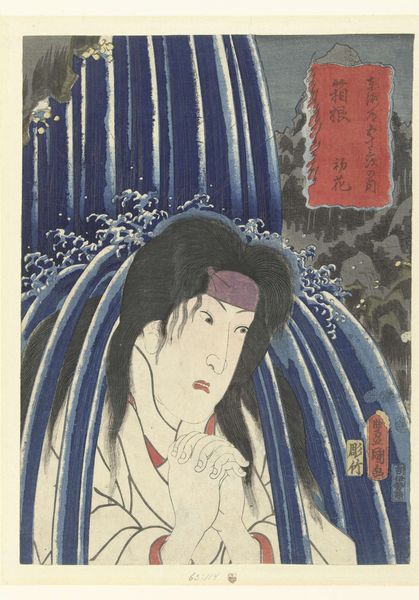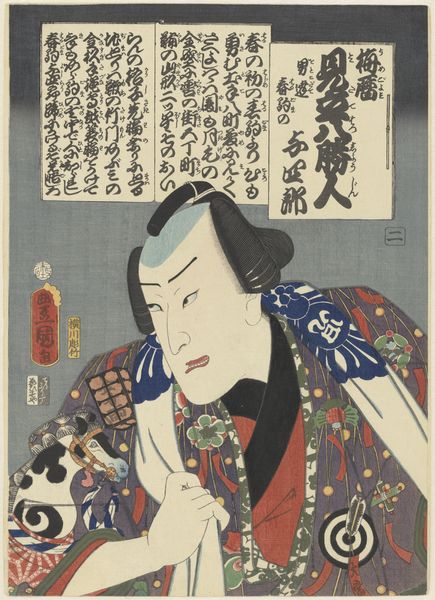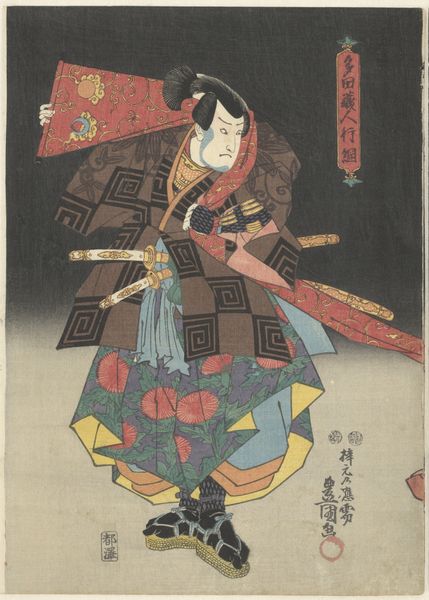
Imaginary portrait, Shuihuzhuan of Stage: Tōryūdai (Mitate Suikoden Tōrōdai) - Actor Ichikawa Sadanji plays Hanaoshō Shinkichi 1875
0:00
0:00
Dimensions: 14 1/8 x 9 1/2 in. (35.9 x 24.1 cm)
Copyright: Public Domain
Editor: Let’s discuss Toyohara Kunichika's woodblock print from 1875, "Imaginary portrait, Shuihuzhuan of Stage: Tōryūdai (Mitate Suikoden Tōrōdai) - Actor Ichikawa Sadanji plays Hanaoshō Shinkichi". There's something really captivating, yet also unsettling, about the actor's intense expression and tightly crossed arms. What's your interpretation? Curator: The unease comes from Kunichika’s canny grasp of Edo-period anxieties and Meiji-period transformations. Consider the context: Japan was rapidly Westernizing. Prints like this, depicting kabuki actors in roles from popular stories, were intensely popular, but also reflected a desire to hold onto older cultural narratives and theatrical forms. Notice the vivid colours. Editor: I hadn't considered it as a way of clinging to the past amid change. But the actor’s makeup…it seems so exaggerated. Curator: Exactly. That exaggerated style is integral to Kabuki theatre, a very stylized medium full of codified gestures, where every tilt of the head and swish of a sleeve conveys a wealth of meaning. However, the choice to represent it in this permanent medium says a lot about the period. Ukiyo-e prints, like photographs in later periods, became an invaluable way to create portraits. Did it replace painting, though? Editor: Interesting! So these prints helped preserve theatrical traditions? Curator: In a way, yes, by popularizing and disseminating these images. Also, the celebrity status of the actors meant a thriving commercial market existed, making this a pivotal point in understanding how Japanese art functioned within its socio-economic structure. Editor: I see what you mean. It's not just a portrait; it's a cultural and historical record, a commodity, and a form of preservation all in one. I learned something new! Curator: And I find that the most rewarding part of looking at art, connecting with the society and cultural factors involved.
Comments
No comments
Be the first to comment and join the conversation on the ultimate creative platform.
